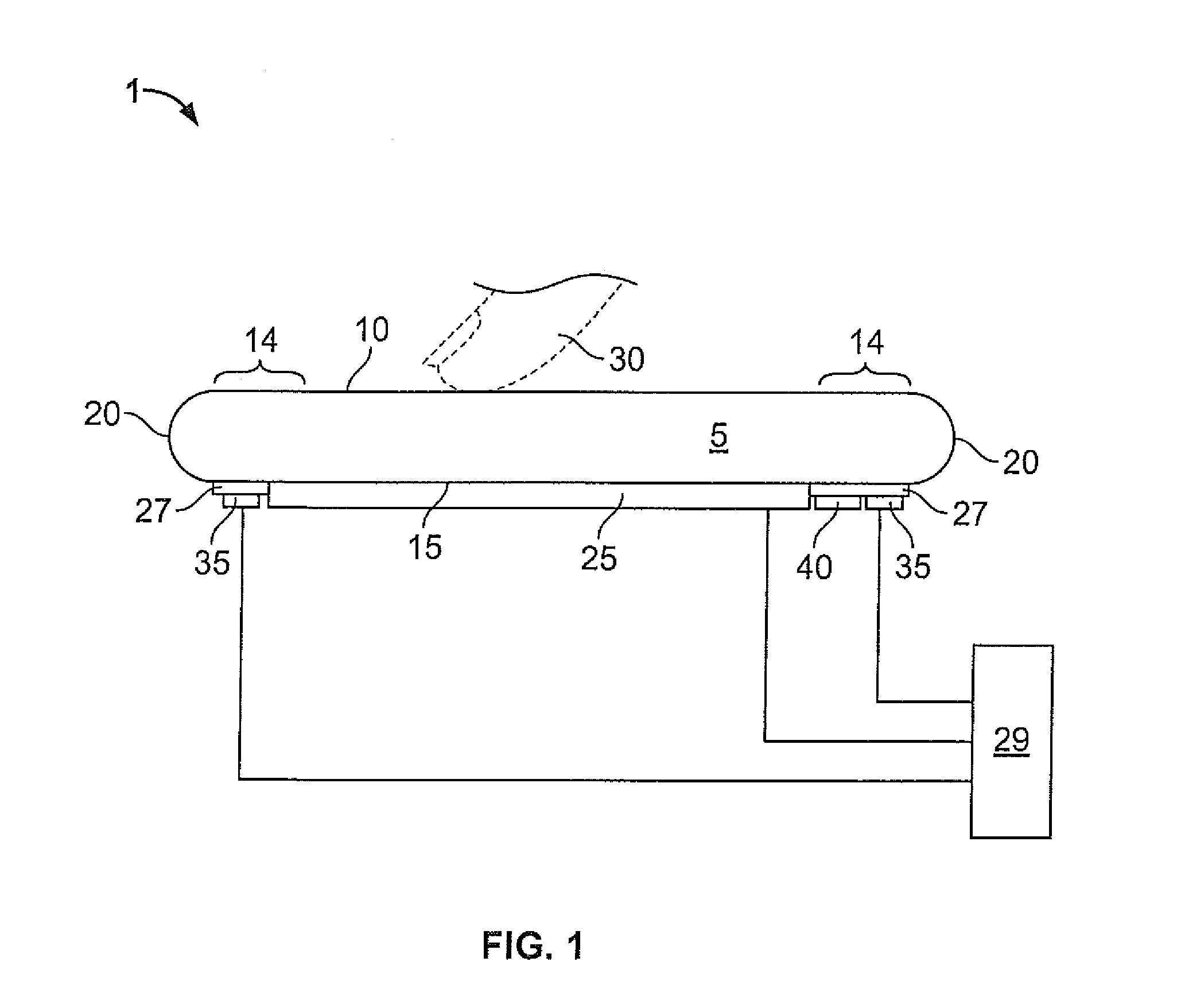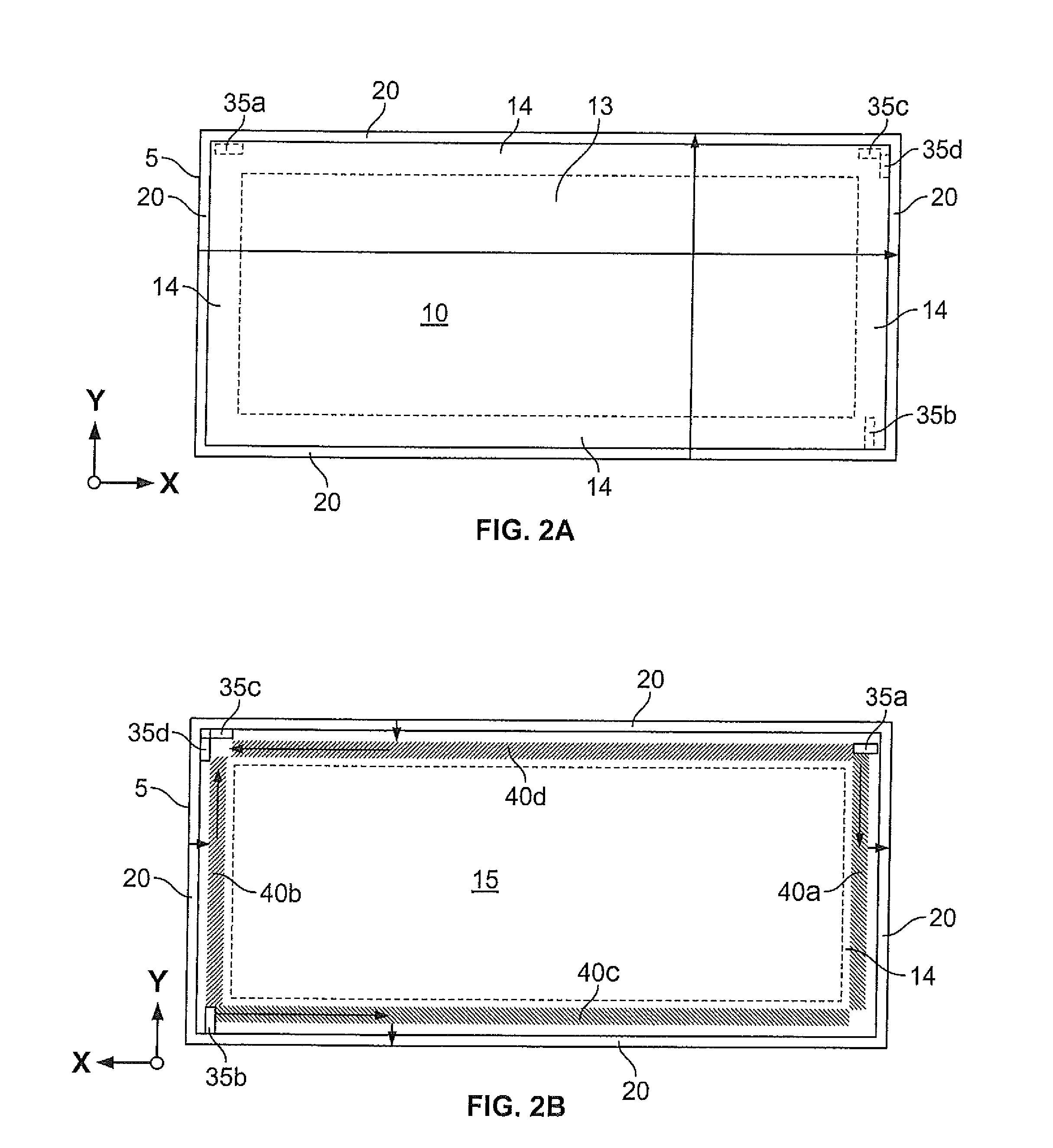Acoustic touch apparatus
a touch sensor and surface acoustic wave technology, applied in the field of acoustic touch sensors, can solve the problems of observed effects, loss of energy, interference with the propagation of surface acoustic waves on the touch substrate,
- Summary
- Abstract
- Description
- Claims
- Application Information
AI Technical Summary
Benefits of technology
Problems solved by technology
Method used
Image
Examples
Embodiment Construction
[0049]FIG. 1 shows a simplified cross-sectional view of an acoustic touch sensor 1. The touch sensor 1 comprises a substrate 5 with a front surface 10, a back surface 15, and connecting surfaces 20 joining the peripheral regions 14 of the front surface 10 and of the back surface 15. A connecting surface 20 need not be curved as shown but generally can have any shape that supports transfer of surface acoustic waves between the front and back surfaces 10, 15. The substrate 5 is typically made of some form of glass which overlies a computer display or computing device display 25, like a liquid crystal display (LCD), a cathode ray tube (CRT), plasma, etc. In a bezeled surface acoustic wave touch sensor, the peripheral region 14 of the front surface 10 is covered by a bezel provided by the housing of the touch sensor 1 or the device integrating the sensor 1, since the transducers and reflective arrays are on the front surface 10 of the substrate 5. In a bezel-less surface acoustic wave t...
PUM
 Login to View More
Login to View More Abstract
Description
Claims
Application Information
 Login to View More
Login to View More - R&D
- Intellectual Property
- Life Sciences
- Materials
- Tech Scout
- Unparalleled Data Quality
- Higher Quality Content
- 60% Fewer Hallucinations
Browse by: Latest US Patents, China's latest patents, Technical Efficacy Thesaurus, Application Domain, Technology Topic, Popular Technical Reports.
© 2025 PatSnap. All rights reserved.Legal|Privacy policy|Modern Slavery Act Transparency Statement|Sitemap|About US| Contact US: help@patsnap.com



